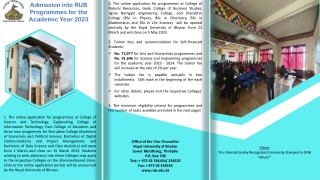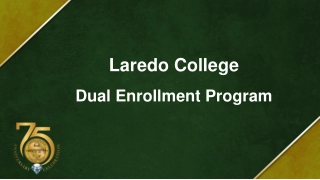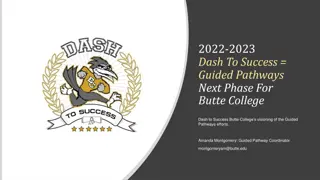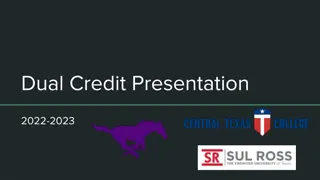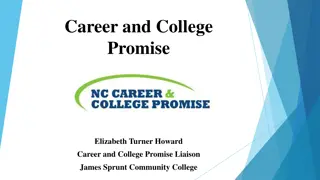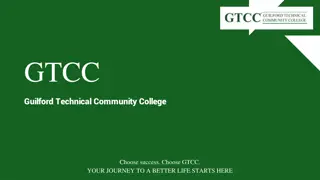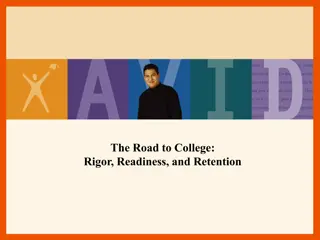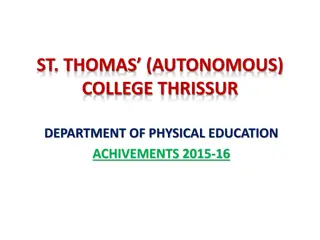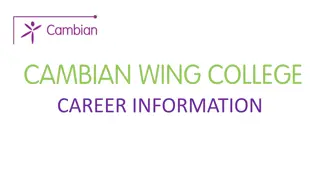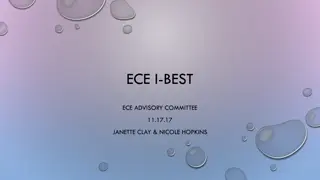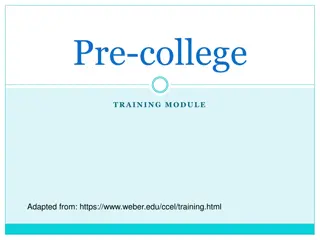Success Strategies for College Students
Learn valuable insights on time management, goal setting, and organization to thrive in college. Discover practical tips to tackle challenges, adapt to various strategies, and identify personalized goals for short-term and long-term success.
Download Presentation

Please find below an Image/Link to download the presentation.
The content on the website is provided AS IS for your information and personal use only. It may not be sold, licensed, or shared on other websites without obtaining consent from the author.If you encounter any issues during the download, it is possible that the publisher has removed the file from their server.
You are allowed to download the files provided on this website for personal or commercial use, subject to the condition that they are used lawfully. All files are the property of their respective owners.
The content on the website is provided AS IS for your information and personal use only. It may not be sold, licensed, or shared on other websites without obtaining consent from the author.
E N D
Presentation Transcript
Getting Ahead Before you Fall Behind How to Succeed in College
You will get behind at some point in college. Relationship drama! Four tests in one week! Three assignments due the same day! Have to work extra hours to cover for someone!
It wont always be fun. Enthusiasm + - 0 month 1 month 2 month 3 month Time
Why is it more important in college? More multitasking More autonomy + Less urgent deadlines ------------------------------- = Trouble unless you can keep track of things
Coveys Categorization Scheme Different levels of organization: First generation: reminders Second generation: advance planning, goal setting Third generation: prioritization Fourth generation: efficiency; goals control most of what you do; importance trumps urgency in your schedule
A caveat Every person is different. No one strategy works for everyone. The solution? Approach it like a scientist. Do experiments until you find something that works. If a strategy doesn t work, figure out why, and adapt accordingly.
Your assignment Identify goals: Short-term (this week) Medium-term (this year) Long-term (5-10+ years) For the next week, try one or more of the strategies presented today (or others). See what works for you (or what doesn t.)
To-do list Every morning, make a list of everything you need or want to get done; work down the list. Advantage: Simple Disadvantage: Tends to focus on short-term needs rather than long-term goals
ABC-123 A fancier to-do list. Mark each item as either A, B, or C. A = urgent; has to be done today. (important enough that you should work late to finish it) B = want to do today, but OK if you don t (not important enough to stay late to finish) C = would like to do, but not urgent (not important enough to stay late to finish)
ABC-123 Then, further classify each item with 1, 2, or 3, and sort. A1 Make presentation for seminar A1 Talk to Avi about NSF proposal A2 Read other NSF calls to get ideas for proposals A3 Call Sherm at WYDOT to get data B1 Plan ahead for networks class B1 Do a TRB review B2 Finish reading papers for TRB reviews B2 Email my paper to Dirck van Vliet B3 Look at international travel grant C1 Scan chapter from library book C2 Debug traffic assignment code C3 Check on VISTA Advantage: Better prioritization Disadvantage: Focus is on urgent things, rather than important things. Still a short-term focus.
Eisenhower Square What is important is seldom urgent, and what is urgent is seldom important.
Eisenhower Square Urgent Not Urgent Important Not Important Advantage: Helps with balance between short and long term Disadvantage: Not as immediately helpful in scheduling
Pareto Analysis Vilfredo Pareto observed that 80% of the land in Italy was owned by 20% of the population; others have noticed this trend elsewhere. 20% of the pea pods in Pareto s garden contained 80% of the peas Fixing 20% of bugs in software would eliminate 80% of crashes (Microsoft) In the business world, typically 80% of business comes from 20% of the customers
Pareto Analysis Workplace studies have shown 80% of tasks can be completed in 20% of your time; the remaining 20% of tasks require 80% of your time 80% of your productivity can be accomplished by 20% of your tasks Therefore, the tasks requiring less of your time should be done first to maximize your productivity Advantage: Emphasizes productivity Disadvantage: Does not address long-term goals
Continuing Improvement Learning to manage time effectively is a process of continuing improvement Long-term commitment to improvement is better than short bursts of organization and giving up when it doesn t work perfectly.



